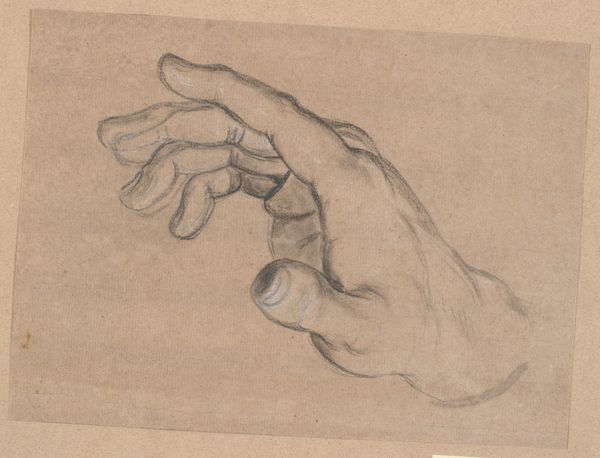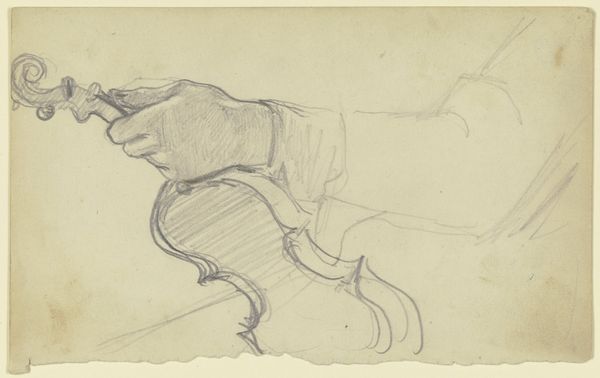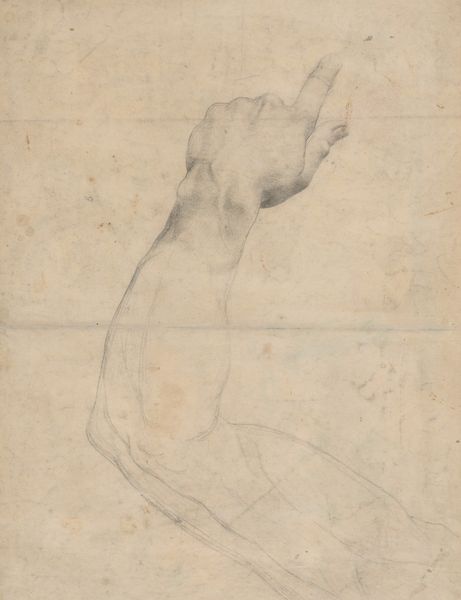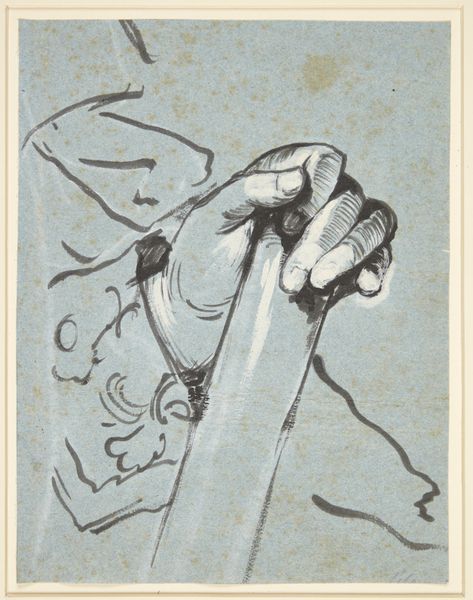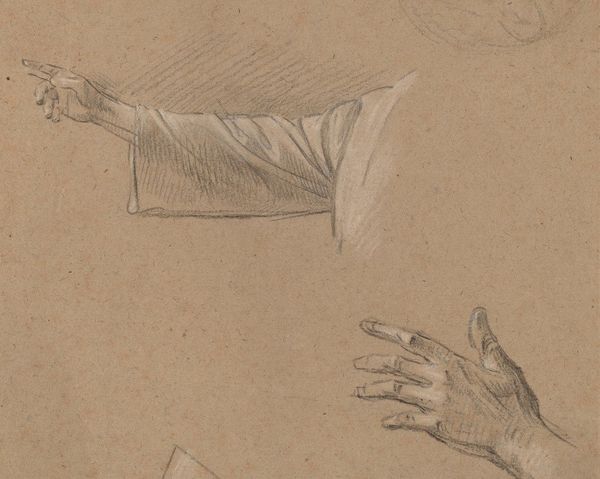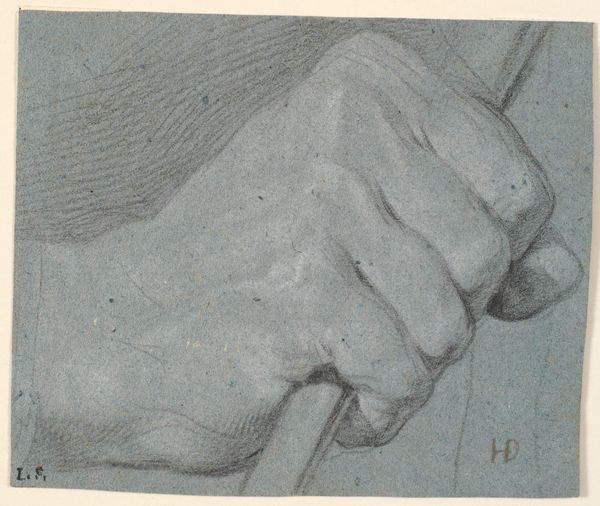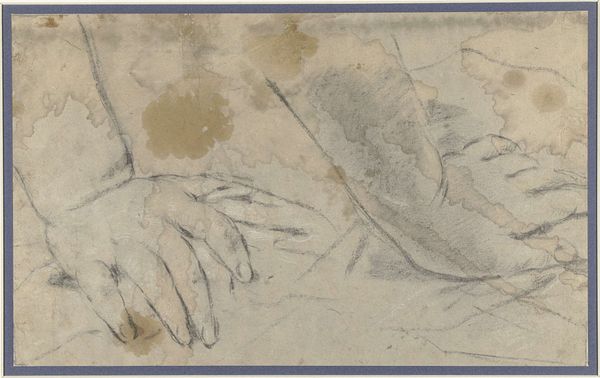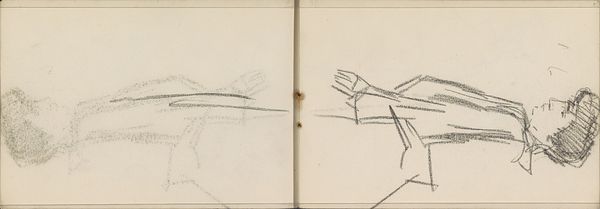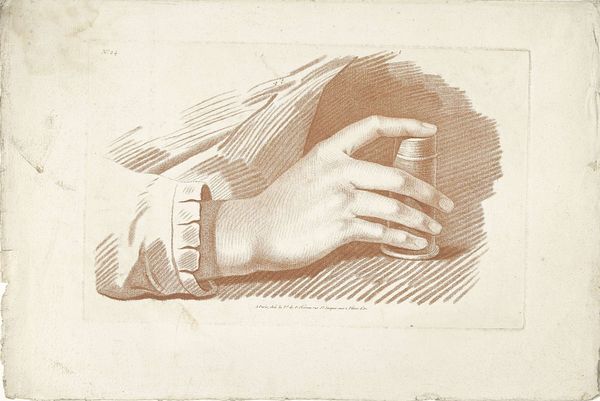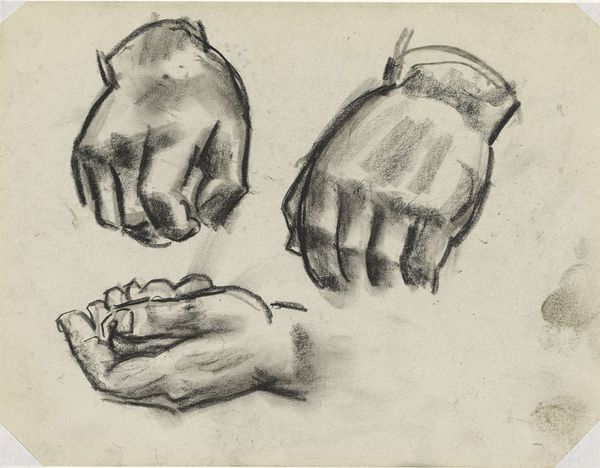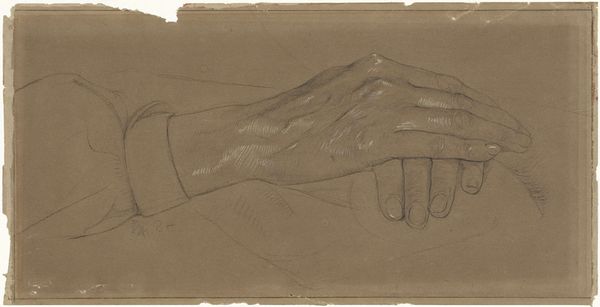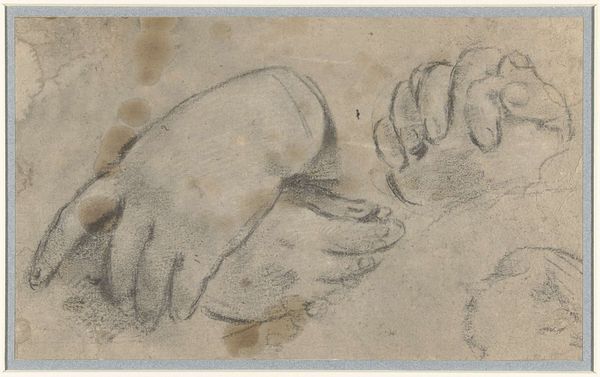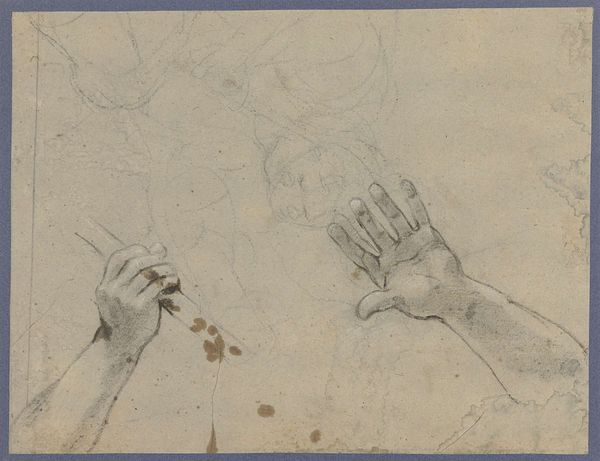
drawing, paper, pencil
#
portrait
#
drawing
#
pencil sketch
#
paper
#
pencil
Dimensions: height 250 mm, width 380 mm
Copyright: Rijks Museum: Open Domain
Editor: Here we have "A Hand Holding a Bell," a pencil on paper drawing created sometime between 1588 and 1660 by Giacomo Cavedone. It’s a rather simple sketch, focusing primarily on the hand and the bell. I'm curious, what stands out to you about it? Curator: Well, immediately my attention is drawn to the materiality of the drawing itself. It’s a sketch, presumably preparatory. What kind of labor went into bell-making at this time? Was this sketch perhaps a step in a longer process of production? I wonder if this drawing can reveal something about craft during this period. Editor: That's fascinating! I was initially just focused on the aesthetic qualities, the line work. I never considered the bell itself and how this study fits into that world of material production. Curator: Think about it: What kind of metal would the bell be cast from? How skilled were the artisans? Were they considered artists or simply laborers? How might that designation affect their social standing and their craft? Editor: So, you're saying the drawing, though seemingly simple, provides a connection to a broader social and economic context? That looking closely at the pencil on paper actually opens up avenues for exploring class divisions? Curator: Precisely. The medium gives the artwork inherent value, but understanding its context reveals another. This object’s purpose and history offer a deeper engagement beyond simply a study. Consider also who this artwork might have been for and how its function influences our perspective today. Editor: It makes me rethink what art truly represents, not just its appearance, but also its role in the bigger world, revealing historical practices. I hadn’t considered art's deep connection to labor. Curator: Exactly! It urges us to see art not just as objects of beauty, but as a product inextricably tied to material conditions and social hierarchies. I think you'll have an evolved appreciation moving forward.
Comments
No comments
Be the first to comment and join the conversation on the ultimate creative platform.
